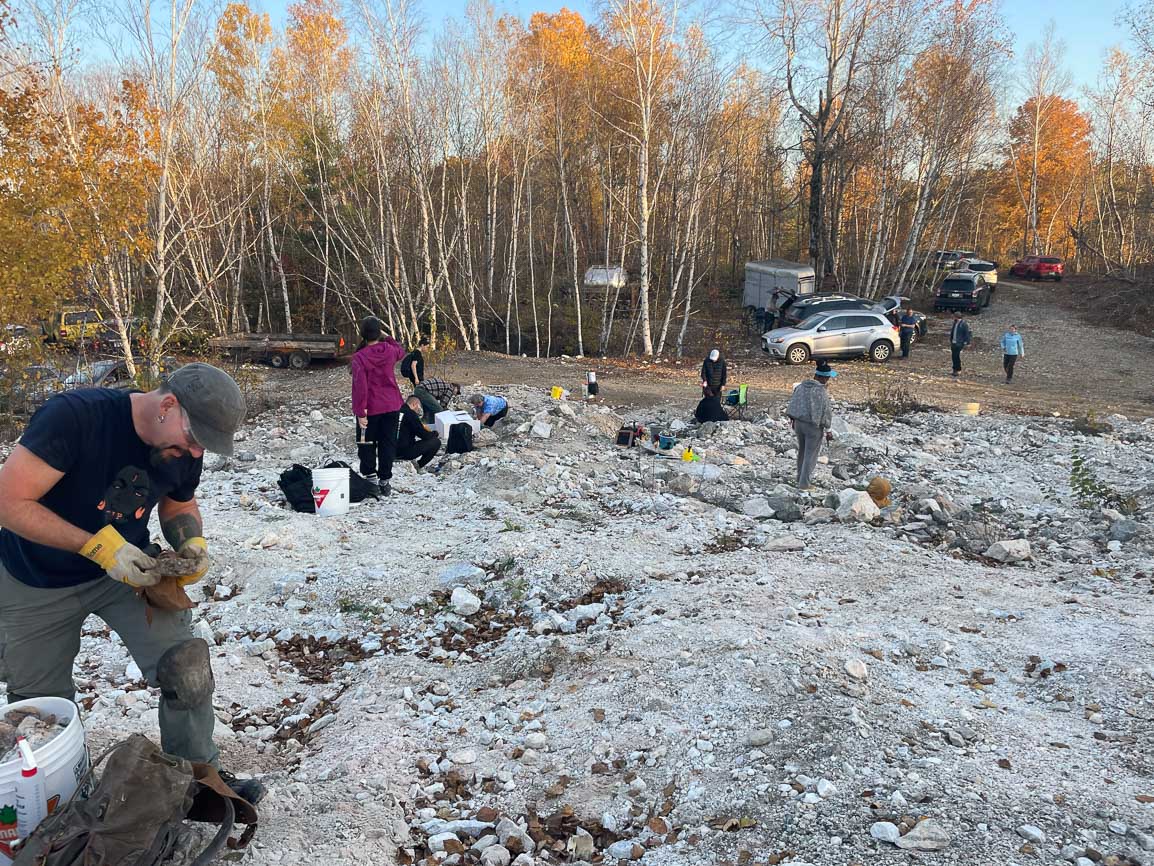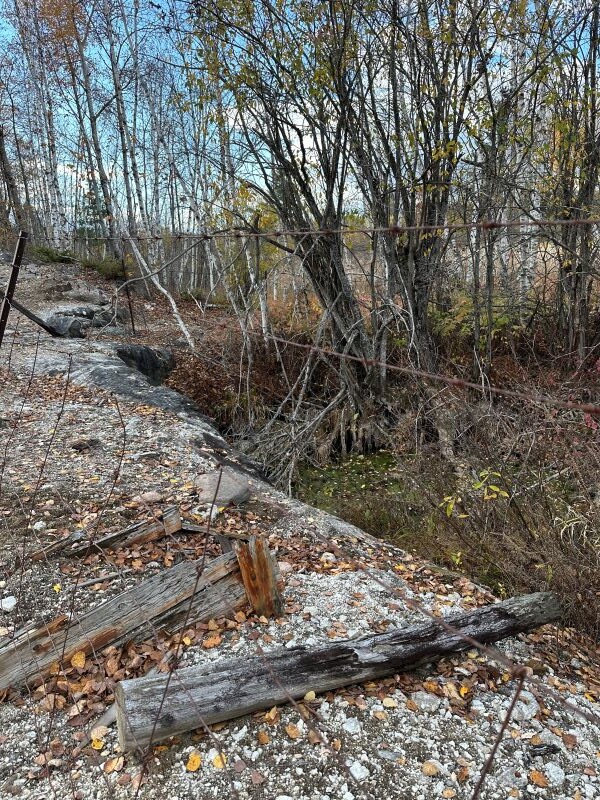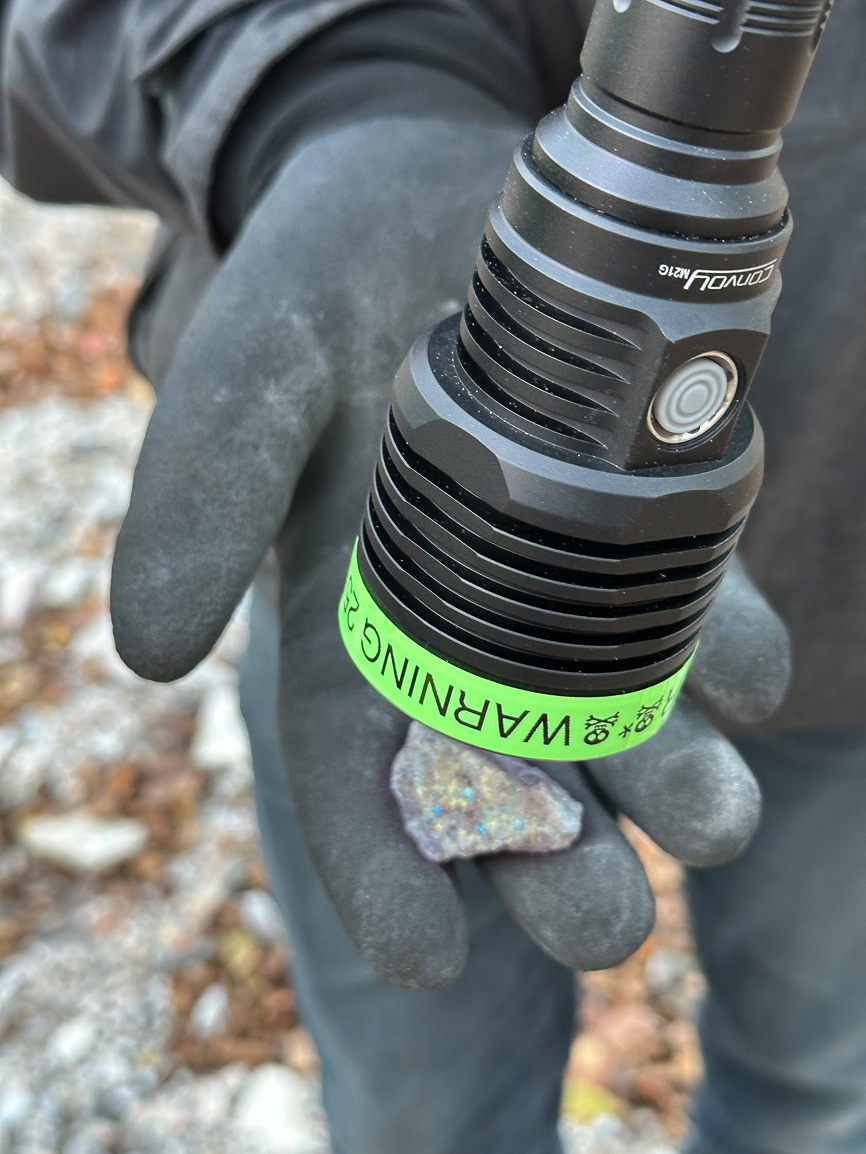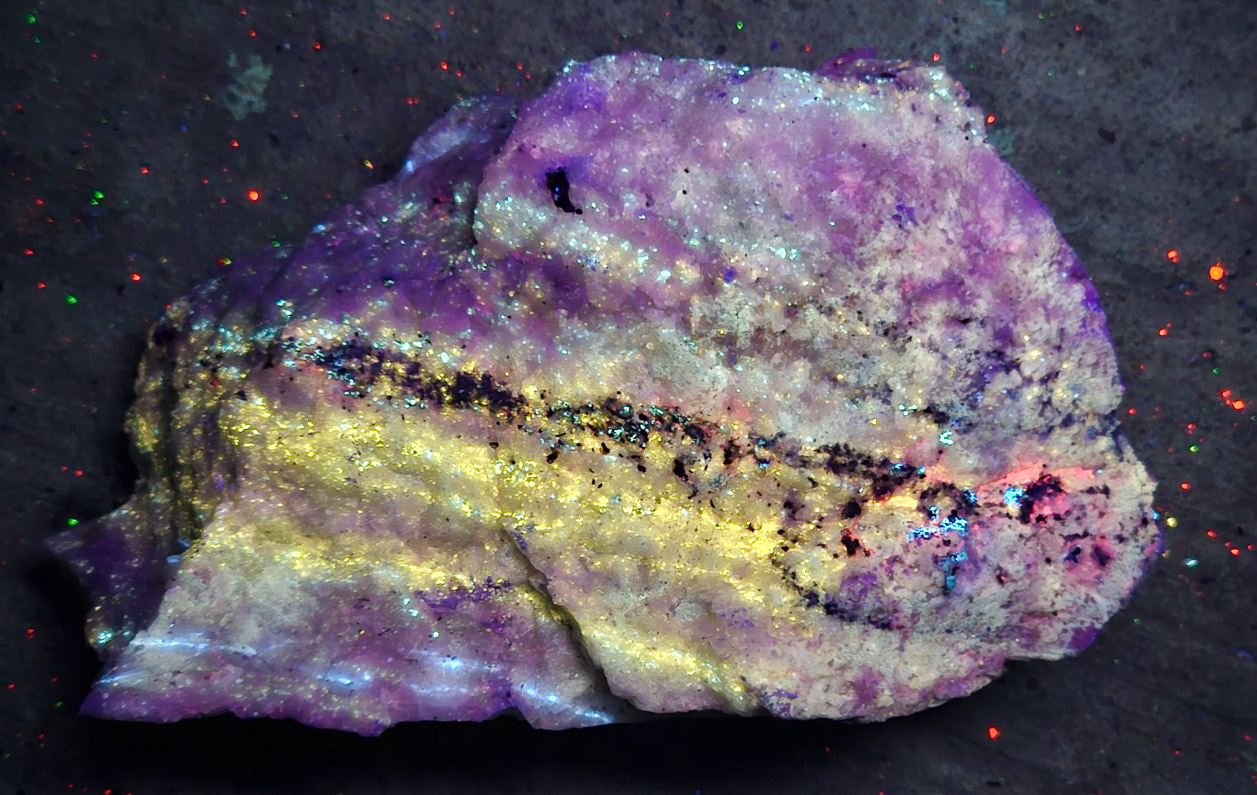Fluorescent Minerals at the Long Lake Zinc Mine
The Wonders of Fluorescence

History
The Long Lake Zinc Mine, located near Parham, Ontario, started in 1897 with a number of mining operations in the early and mid 1900s focusing on zinc and lead ores. The last mine operation in the 1970s produced over 94,000 tons or ore. Mineralization consists primarily of sphalerite with some pyrite, pyrrhotite and minor galena, chalcopyrite and molybdenite – all within calcitic marble.
Today, visitors must have permission and pay a fee for collecting.
Fluorescent Minerals
Besides the minerals being mined, there are a number of fluorescent minerals easy to find in the mine dumps:
- Aragonite – White lightening bolts under long-wave UV
- Calcite – Deep red under short-wave UV
- Chondrodite – Strong yellow under short-wave UV
- Diopside – Blue under short-wave UV
- Hydrozincite – White-blue under short-wave UV
Video
Watch this video put together by Michael Leveille with Bob Boisvert on a trip with the Ottawa Valley Mineral Club late afternoon until after dark to see the incredible glowing minerals:
Tips for Going to Long Lake Zinc Mine
Besides the beautiful fluorescent minerals, there are other minerals that can be collected such as calcite crystals, pyrite, galena and others. Of course sphalerite being the main zinc ore present is abundant and “peacock rock” – tarnished chalcopyrite can be found.

Be respectful of fences and watch children carefully. Here a fence surrounds mine diggings and adits.
Since most specimens are on or close to the surface, bring a garden trowel or hand rake, maybe a small shovel. Most important is a UV light: short-wave especially – if you have one.
If your visit is only during daylight, bring a box cut up so that you can view the rocks under UV light, with no daylight getting into the box.

UV Light shows chondrodite (yellow) and diopside (blue) despite still being in daylight








